Drawing from the experience gained from its predecessors, the Lafayette class of U.S. nuclear ballistic missile submarines represented the third generation of Polaris-firing submarines.
Significantly larger and heavier, these submarines were designed to improve crew living conditions during extended patrols. Most importantly, the Lafayette class submarines were specifically designed to carry the Poseidon C3, an upgraded version of the Polaris ballistic missile.
| Lafayette class SPECIFICATIONS | |
|---|---|
| Length: | 425 ft (129.57 m) |
| Height: | 32 ft (9.75 m) |
| Width: | 33 ft (10.06 m) |
| Weight: | 7,310 tons surfaced 8,260 tons submerged |
| Armament: | 16 steam ejection tubes for Polaris, Poseidon missiles and four 21-inch torpedo tubes |
| Speed: | 21 knots on the surface 16 knots submerged |
| Powerplant: | Single S5W pressurized water nuclear reactor |
| Crew complement: | 145 men; 15 officers, 130 enlisted |
| Contractors: | General Dynamics Electric Boat Division, Mare I NSYd, Newport News, Portsmouth NSYd |
| Names of submarines: | (616) Lafayette, (617) Alexander Hamilton, (619) Andrew Jackson, (620) John Adams, (622) James Monroe, (623) Nathan Hale, (624) Woodrow Wilson, (625) Henry Clay, (626) Daniel Webster |
Description
Design
Lafayette-class submarines, inheriting their design from the Ethan Allen class, expanded on the previous models to better accommodate maintenance and crew needs. Named after the French hero of the American Revolution, the Lafayette was the flagship of this new generation of Polaris-firing submarines that was slated to become the standard for its class.
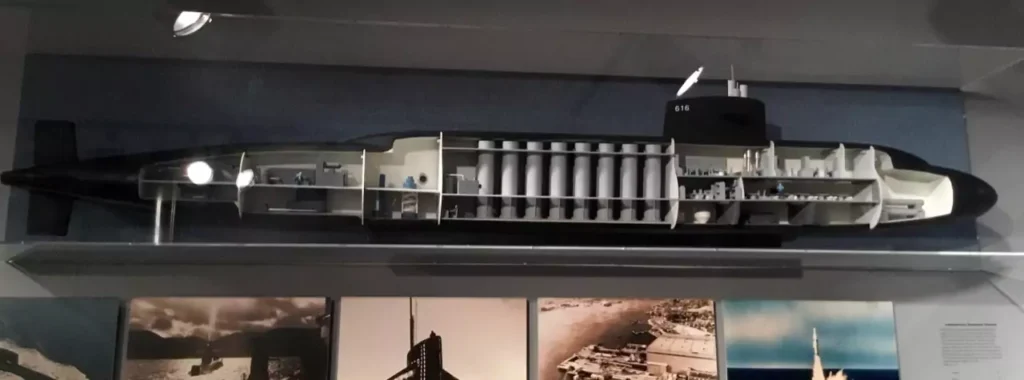
With two additional compartments, a gym, and a crew lounge, these 7,000-ton submarines were designed for maximum crew morale during extended patrols. Although they housed no additional crew members, the increase in hull length from the previous models to 425 feet enhanced overall crew space, improving habitability on long voyages. Each submarine was staffed by fifteen officers and 130 enlisted men, with all but the captain and the executive officer housed in triple bunk accommodations.
The Lafayette class maintained the same 33-foot beam as the previous FBM submarines, with a maximum draft of 32 feet and a surface displacement of 7,310 tons, rising to 8,260 tons when submerged. These vessels incorporated the same BQS-4 active/passive sonar system utilized in the Skipjack class of high-speed nuclear attack submarines.
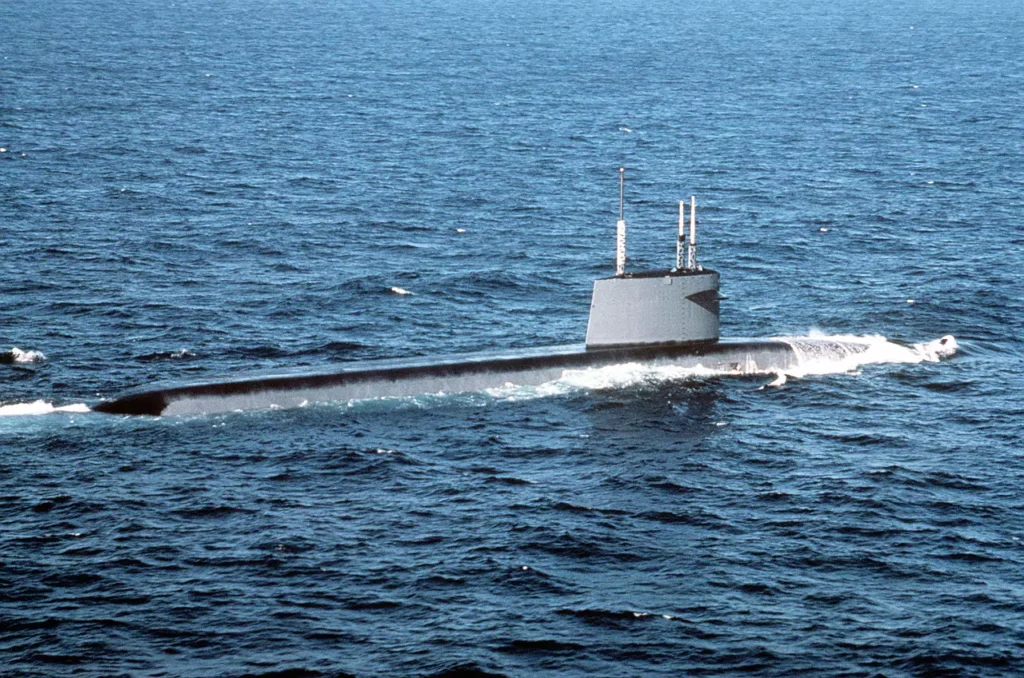
The Daniel Webster submarine from this class was distinguished by a bow-mounted diving plane protrusion, a unique placement that later proved unsuccessful and was moved to the sail during a refit period.
Additionally, the design of the Lafayette class had a direct impact on the British submarine program. The UK’s four Resolution-class SSBNs closely mirrored the size and design of the Lafayettes, including the bow-mounted diving planes and the Aerojet/Hercules Polaris A-3 missile system.
Missiles
Lafayette-class submarines were initially designed to accommodate the larger, long-range Poseidon C-3 missile system. However, due to unavailability at the time of construction, the submarines were fitted with the Polaris A-2 missile system, with plans to upgrade to Poseidon at a later date.

The first eight vessels were equipped with the Polaris A-2 missile, offering a 1,500 nautical mile range, while the last one was fitted with the longer-range Polaris A-3 missile, boasting a range of 2,500 nautical miles.
Submarines SSBN 620 and SSBN 622-625 were rearmed with the Polaris A-3 missile during overhauls between 1968 and 1970. Notably, Andrew Jackson was the first to launch a Polaris A-3 missile on October 26, 1963, while Daniel Webster was the first submarine to deploy with the A-3 missile, beginning her initial patrol on September 28, 1964.
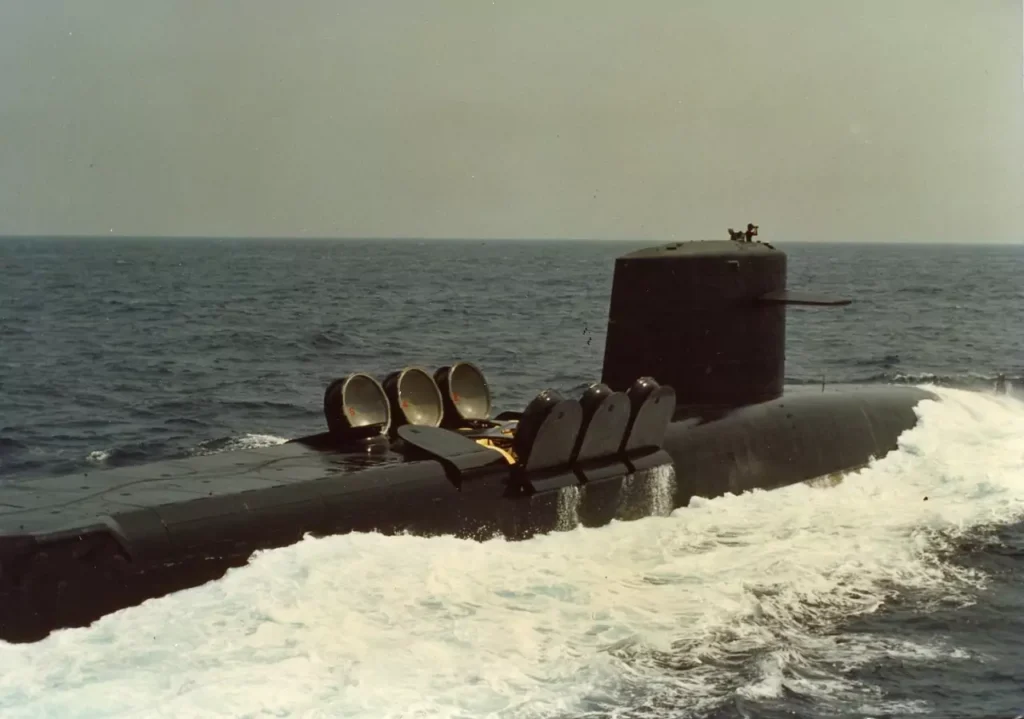
In the mid-1970s, with the availability of the Poseidon system, all Lafayette-class submarines underwent back fitting to accommodate these more potent, long-range missiles. The two-year retrofitting process involved the removal of the original missile tube liners, replaced by larger-diameter ones.
Additionally, the missile fire control system was upgraded, with the Mark 88 system superseding the earlier Mark 84. These modifications were carried out during regular overhaul periods across five different shipyards.
Propulsion
Like its predecessors (the 598 and 608 classes), the Lafayette class also incorporated the Westinghouse SSW nuclear reactor, generating 15,000 horsepower and enabling a maximum submerged speed of over 20 knots.
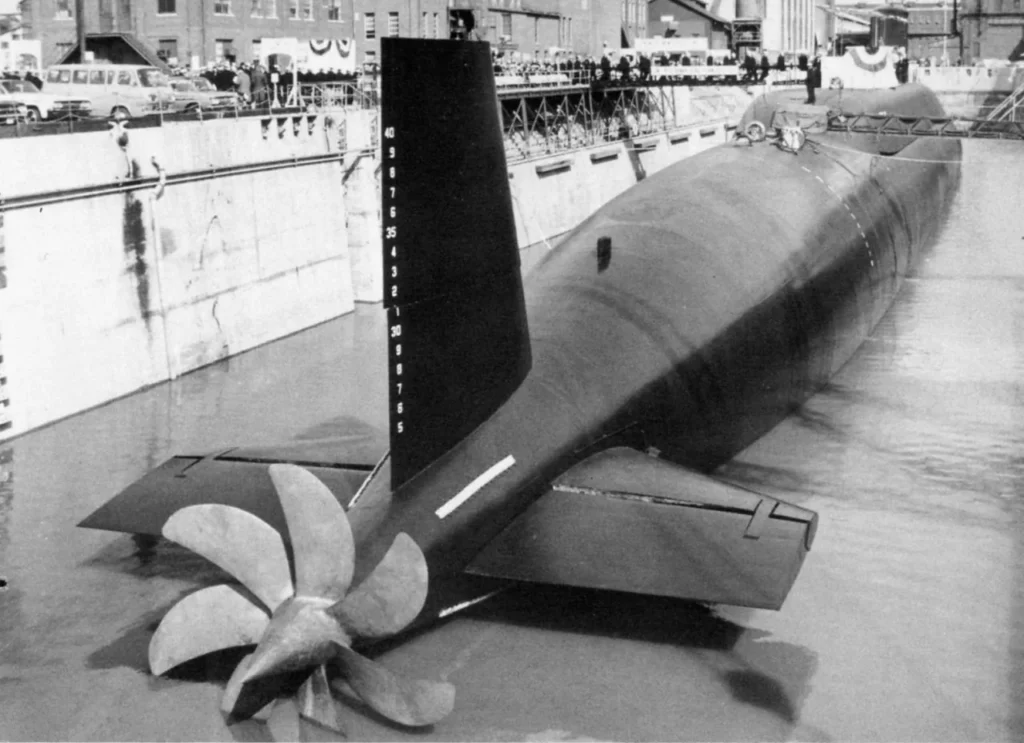
Three different types of geared turbines were installed across the class. The USS Lafayette (SSBN 616), USS Alexander Hamilton (617), USS Andrew Jackson (619), USS John Adams (620), and USS Woodrow Wilson (624) were each equipped with two General Electric geared turbines.
The USS Nathan Hale (623) utilized a DeLaval turbine, while the USS James Monroe (622), USS Henry Clay (625), and USS Daniel Webster (626) were fitted with Westinghouse geared turbines.
Torpedoes
As a defensive measure, the submarines were equipped with four 21-inch Mark 65 torpedo tubes positioned at the bow. Although primarily focused on stealth and quiet operation for survival, these FBM submarines could use the torpedoes as a last resort. The Mark 113 fire control system was in place to manage the firing of these torpedoes.
Construction
With the Ethan Allen-class submarines in active construction, President Eisenhower authorized the building of five additional Fleet Ballistic Missile submarines on July 15, 1960. Among these, the Thomas Jefferson (SSBN-618) was of the Ethan Allen class, while the remaining four incorporated improved designs featuring quieter machinery and steam ejection for the missile tubes, marking the emergence of the Lafayette (SSBN 616) Class.
| No. | Name | Builder | Keel Laid | Launched | Comm. |
|---|---|---|---|---|---|
| SSBN 616 | Lafayette | Electric Boat | 17 Jan 1961 | 8 May 1962 | 23 Apr 1963 |
| SSBN 617 | Alexander Hamilton | Electric Boat | 26 Jul 1961 | 18 Aug 1962 | 27 Jun 1963 |
| SSBN 619 | Andrew Jackson | Mare I NSYd | 26 Apr 1961 | 15 Sep 1962 | 3 Jul 1963 |
| SSBN 620 | John Adams | Portsmouth NSYd | 19 May 1961 | 12 Jan 1963 | 12 May 1964 |
| SSBN 622 | James Monroe | Newport News | 31 Jul 1961 | 4 Aug 1962 | 7 Dec 1963 |
| SSBN 623 | Nathan Hale | Electric Boat | 2 Oct 1961 | 12 Jan 1963 | 23 Nov 1963 |
| SSBN 624 | Woodrow Wilson | Mare I NSYd | 13 Sep 1961 | 22 Feb 1963 | 27 Dec 1963 |
| SSBN 625 | Henry Clay | Newport News | 23 Oct 1961 | 30 Nov 1962 | 20 Feb 1964 |
| SSBN 626 | Daniel Webster | Electric Boat | 28 Dec 1961 | 27 Apr 1963 | 9 Apr 1964 |
Construction of the first of these advanced submarines, the USS Lafayette, began on June 17, 1961. Twelve days later, President John F. Kennedy expedited the process by authorizing the construction of the next five submarines, a year ahead of schedule.
This unprecedented acceleration of the FBM construction program aimed to counter Soviet submarine development and strengthen the US nuclear deterrent capability. The 1961 authorization bill also provisioned for the building of the USS Holland (AS-32), the first purpose-built fleet ballistic missile submarine tender.
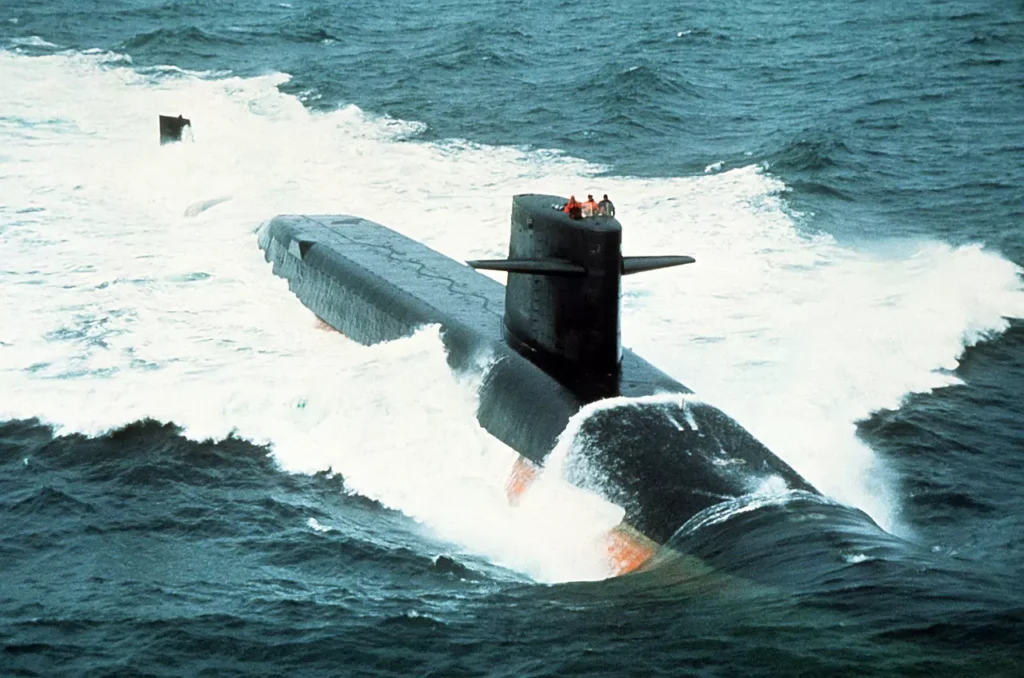
By the end of 1961, construction was in progress on nine Lafayette class submarines. The Electric Boat Company built the lead ship, USS Lafayette (616), as well as SSBN 617 and 623. Newport News Shipbuilding was responsible for SSBN 619, 622, and 625, while Portsmouth Naval Shipyard and Mare Island constructed SSBN 620 and 624 respectively.
From the first launch in 1962, it took two years until the final ship was commissioned in 1964. The cost of a 616-class submarine was about 116.2 million.
Service
The construction of the Lafayette was finalized in May 1962, and it was christened on May 8 of the same year. The submarine launched its first Polaris A-2 missile during sea trials in June 1962 and was officially commissioned on April 23, 1963. Its first deterrent patrol, armed with 16 Polaris A-2 missiles, commenced on January 4, 1964.
The Lafayette arrived in Rota, Spain on May 25, 1964, inaugurating this new advanced FBM facility. It was the first FBM submarine to join Submarine Squadron 16 at Rota.
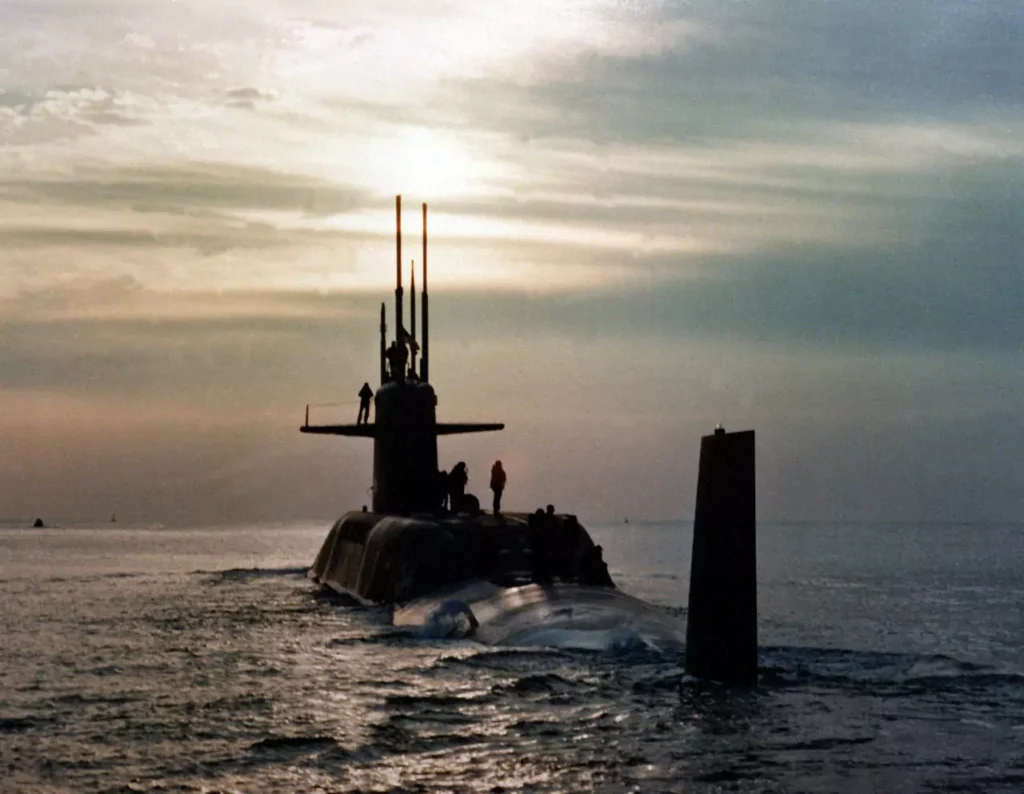
On September 26, 1964, the Daniel Webster, the last submarine of the Lafayette class, set off on its inaugural patrol. Equipped with the Polaris A-3P, this patrol represented the debut of this missile in the U.S. fleet and signaled the full deployment of the Lafayette class submarines.
Following their deployment, the Lafayette class submarines consistently operated with the Atlantic fleet. Over the years, several enhancements were implemented to maintain their effectiveness.
During the first overhaul phase from November 1968 to August 1970, many submarines were equipped with the Polaris A-3P missile, with the Lafayette, the Alexander Hamilton, and the Andrew Jackson being the exceptions.
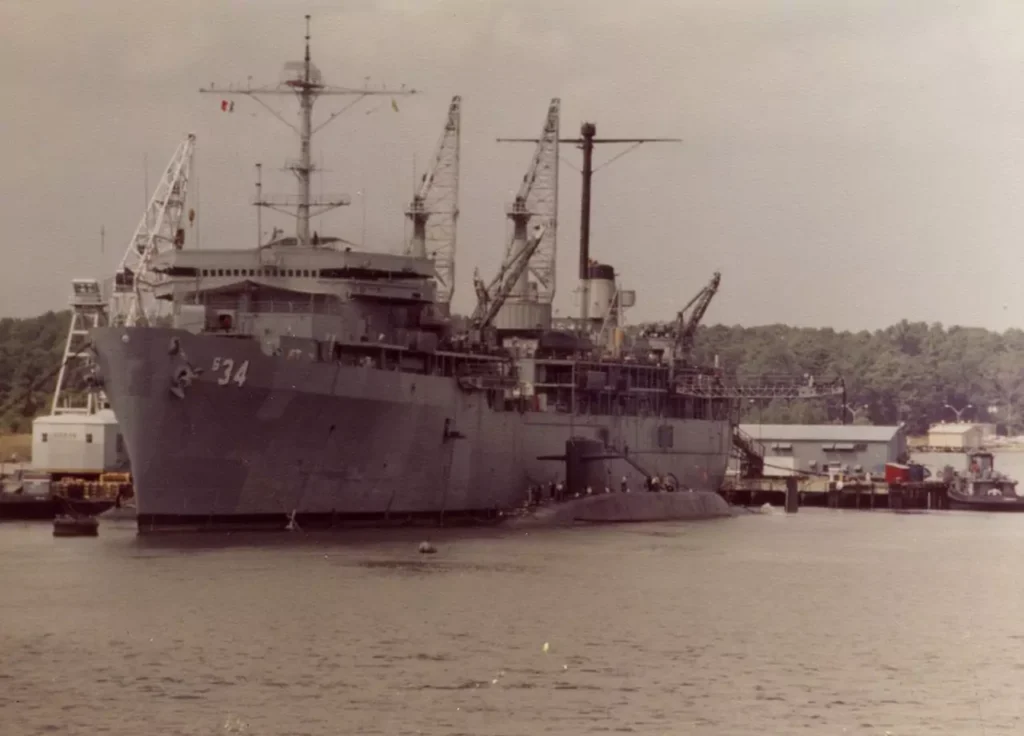
During the second overhaul period from June 1975 to September 1978, all nine submarines were armed with the advanced Poseidon C-3 missile system.
In the following table, the details of the conversion to Poseidon are shown:
| No. | FY Program | Conversion Yard | Start | Complete |
|---|---|---|---|---|
| SSBN 616 | 1973 | Electric Boat | 15 Oct 1972 | 7 Nov 1974 |
| SSBN 617 | 1973 | Newport News | 15 Jan 1973 | 11 Apr 1975 |
| SSBN 619 | 1973 | Electric Boat | 19 Mar 1973 | 15 Aug 1975 |
| SSBN 620 | 1974 | Portsmouth NSYd | 1 Feb 1974 | 15 Apr 1976 |
| SSBN 622 | 1975 | Newport News | 15 Jan 1975 | 14 May 1977 |
| SSBN 623 | 1973 | Puget Sound NSYd | 15 June 1973 | 27 June 1975 |
| SSBN 624 | 1974 | Newport News | 1 Oct 1973 | 23 Oct 1975 |
| SSBN 625 | 1975 | Portsmouth NSYd | 29 Apr 1975 | 29 July 1977 |
| SSBN 626 | 1975 | Electric Boat | 1 Dec 1975 | 21 Feb 1978 |
Decommission
The decommissioning process of the Lafayette class submarines began with Nathan Hale on February 11, 1988, to adhere to the Salt I Treaty. After having reached its 25-year lifespan, the submarine was dismantled and disposed of, following the removal of sensitive missile and reactor equipment, leaving eight operational Lafayette class FBMs.
| No. | Name | Decomm. | Striken | Broken up |
|---|---|---|---|---|
| SSBN 616 | Lafayette | 12 Aug 1991 | 12 Aug 1991 | 1992 |
| SSBN 617 | Alexander Hamilton | 23 Feb 1993 | 23 Feb 1993 | 1994 |
| SSBN 619 | Andrew Jackson | 31 Aug 1989 | 31 Aug 1989 | 1999 |
| SSBN 620 | John Adams | 24 Mar 1989 | 24 March 1989 | 1996 |
| SSBN 622 | James Monroe | 25 Sep 1990 | 25 Sep 1990 | 1995 |
| SSBN 623 | Nathan Hale | 3 Nov 1986 | 31 Dec 1986 | 1994 |
| SSBN 624 | Woodrow Wilson | 1 Sep 1994 | 1 Sep 1994 | 1998 |
| SSBN 625 | Henry Clay | 5 Nov 1990 | 5 Nov 1990 | 1997 |
| SSBN 626 | Daniel Webster | 30 Aug 1990 | 30 Aug 1990 | - |
As the new Ohio Class submarines became operational, the remaining Lafayette class submarines were either decommissioned or transitioned to SSN operations before final decommissioning and retirement.
This process took place from 1988 to 1990. To comply with the Strategic Arms Reduction Treaty (START), Alexander Hamilton and Woodrow Wilson were deactivated and their weapon systems were removed by July 1992.
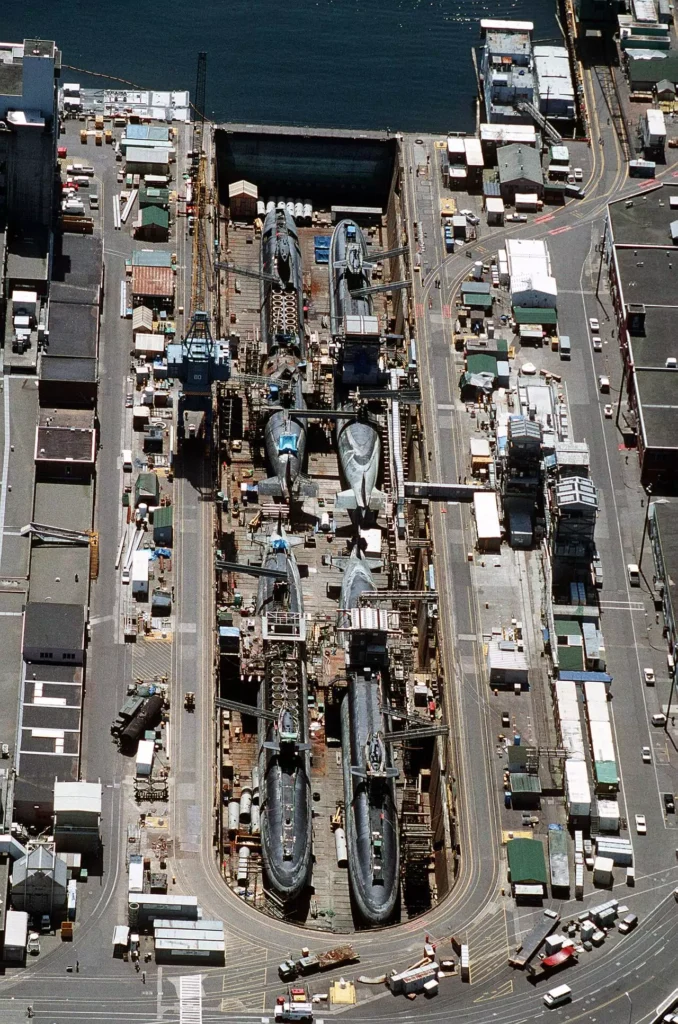
The lead ship of the class, the USS Lafayette, was decommissioned in 1990. In the same year, the Daniel Webster was re-designated as a moored training ship (MTS 626) and positioned at the Charleston Naval Submarine Base, a role also taken on by the decommissioned USS Sam Rayburn.
Other submarines were considered for conversion into reactor prototype training facilities, replacing the previous land-based setups to provide a more realistic training atmosphere. By December 1993, only Woodrow Wilson remained in service.
Further reading
Bibliography
- Polmar, N., Moore, K. J. (2014). Cold War Submarines: The Design and Construction of U.S. and Soviet Submarines. United States: Potomac Books, Incorporated.
- Polmar, N. (1993). The Naval Institute Guide to the Ships and Aircraft of the U.S. Fleet, 15th Edition. United States: Naval Institute Press.
- Gibson, J. N. (1996). Nuclear Weapons of the United States: An Illustrated History. United States: Schiffer Publishing.
- Adcock, A. (1993). U.S. Ballistic Missile Subs in Action. United States: Squadron/Signal Publications.
- Friedman, N. (1995). U.S. submarines through 1945: an illustrated design history. United States: Naval Institute Press.